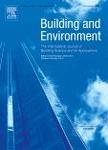版权所有:内蒙古大学图书馆 技术提供:维普资讯• 智图
内蒙古自治区呼和浩特市赛罕区大学西街235号 邮编: 010021

作者机构:Nanjing Forestry Univ Dept Landscape Architecture Nanjing Peoples R China Seoul Natl Univ Grad Sch Environm Studies Dept Environm Design Seoul South Korea Seoul Natl Univ Interdisciplinary Program Landscape Architecture Seoul 08826 South Korea Seoul Natl Univ Integrated Major Smart City Global Convergence Seoul 08826 South Korea Nanjing Forestry Univ Dept Art & Design Nanjing Peoples R China
出 版 物:《BUILDING AND ENVIRONMENT》 (Build. Environ.)
年 卷 期:2025年第270卷
核心收录:
学科分类:0830[工学-环境科学与工程(可授工学、理学、农学学位)] 08[工学] 0813[工学-建筑学] 0814[工学-土木工程]
基 金:Graduate Research and Innovation Projects of Jiangsu Province [KYCX22_1102] Priority Academic Program Development of Jiangsu Higher Education Institutions Korea Ministry of Land, Infrastructure and Transported (MOLIT) as an Innovative Talent Education Program for Smart City
主 题:Urban heat island effect Multidimensional urban morphology Local climate zone Category Boosting SHapley additive exPlanations Interpretable machine learning
摘 要:Classifying local climate zones (LCZ) improves the understanding of how urban morphology affects the urban heat island (UHI) effect. However, differences in driving mechanisms across various LCZ types are often overlooked, leading to a lack of targeted UHI mitigation measures for different LCZ types. In this study, we took Shenzhen as a case study and employed a novel interpretable CatBoost-SHAP machine learning model to evaluate the contributions of multidimensional urban morphology factors to the UHI effect across various LCZ types. We found that the driving mechanisms in different LCZ types have both commonalities and differences. For all LCZ types, the blue-green space ratio (BGSR), digital elevation model (DEM), albedo (AL), and mean building height (MBH) consistently exhibited significant negative impacts on the UHI effect, whereas space crowding degree (SCD) showed a positive impact. Although some factors such as sky view factor (SVF), building shape index (BSI), and surface unfolding ratio (SUR) also contributed to the UHI effect, the positive and negative correlations are reversed across different LCZ types. Additionally, factors such as green view index (GVI) and patch density (PD) had a greater influence on land cover types compared to built types. These findings reveal the complex interactions between urban morphology and the UHI effect, underscoring the necessity of investigating the driving mechanisms across various LCZ types. Our study can provide valuable insights for urban planners and policy- makers to develop targeted mitigation strategies for specific LCZ types, thereby effectively alleviating the UHI effect.